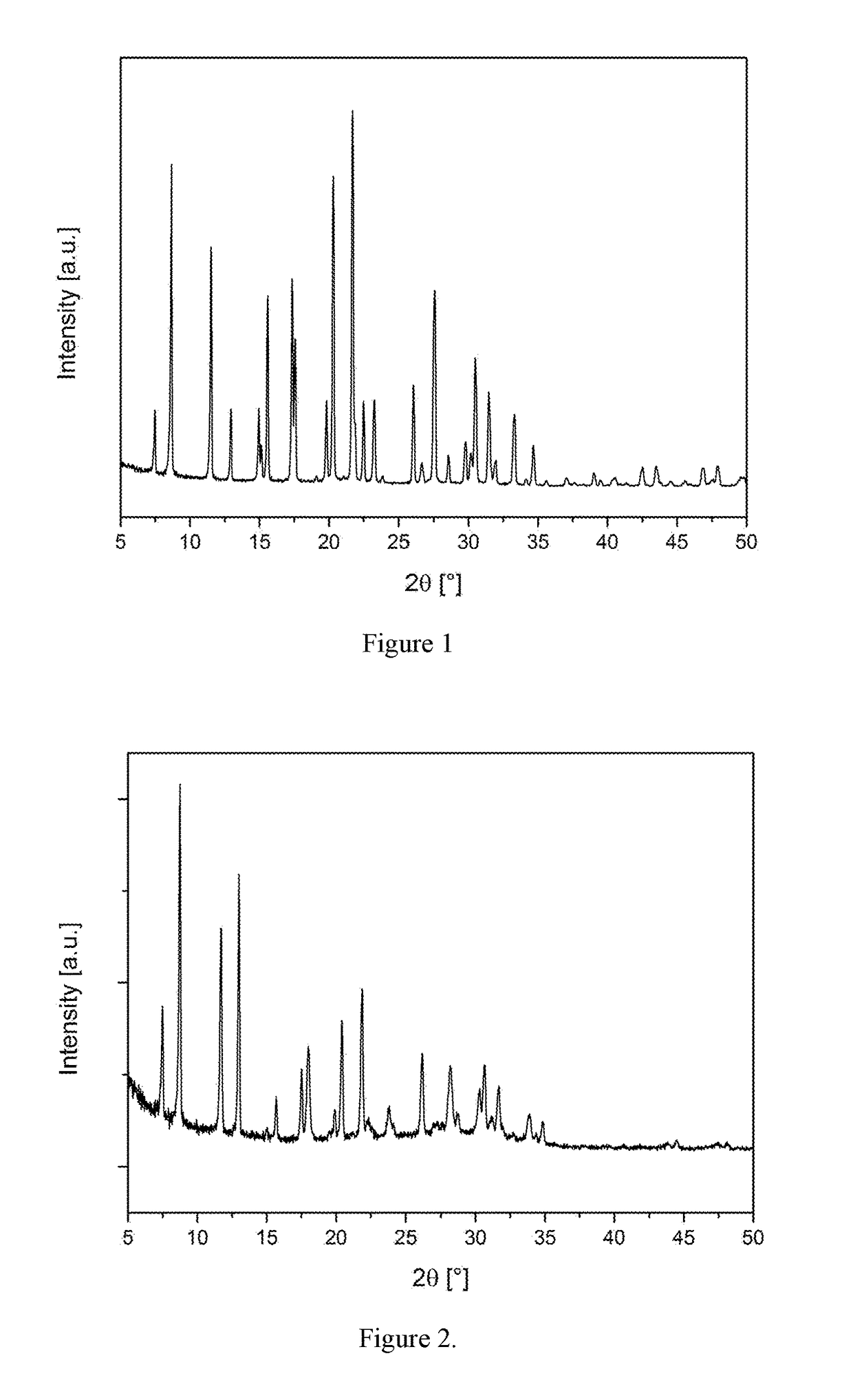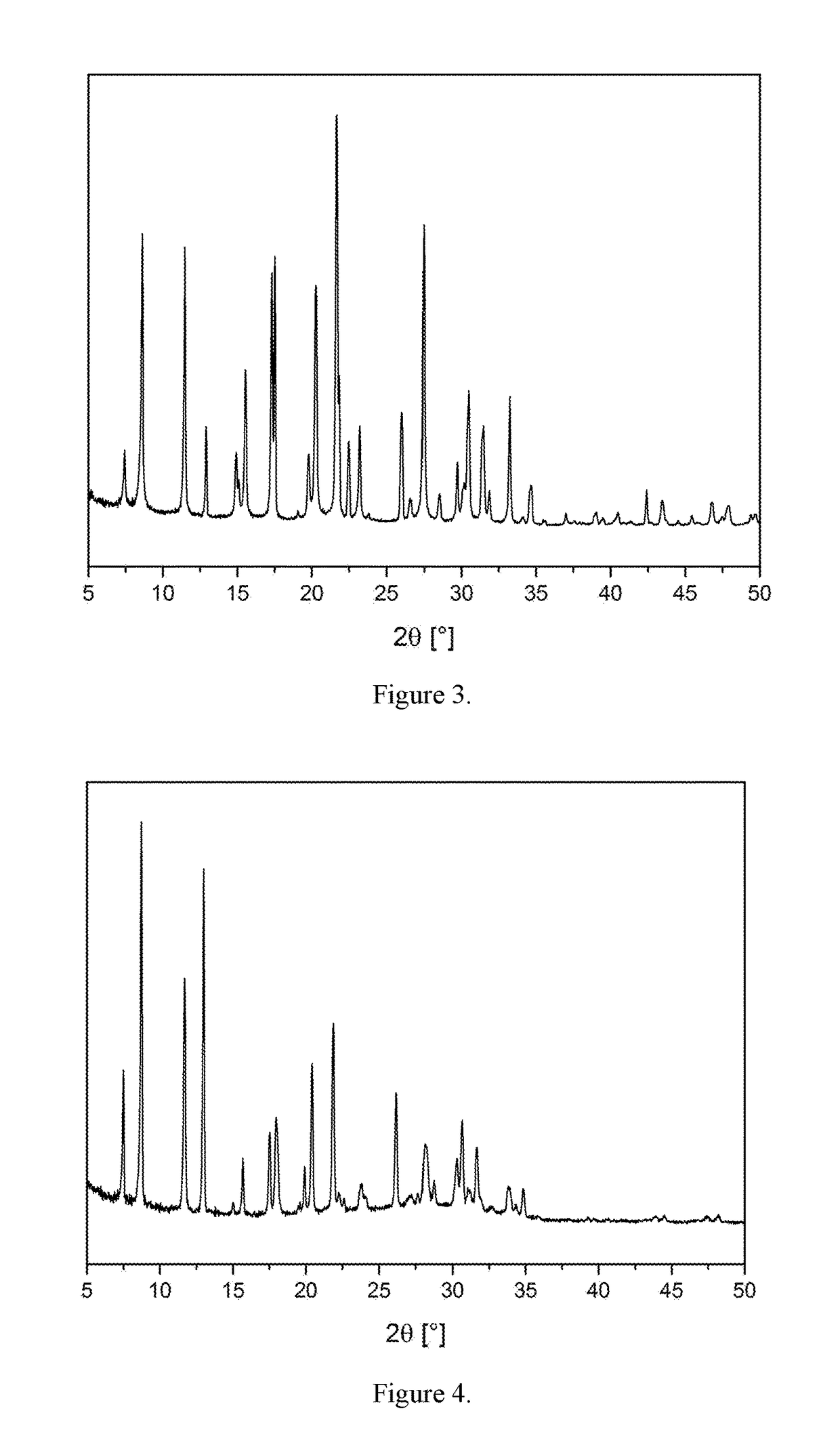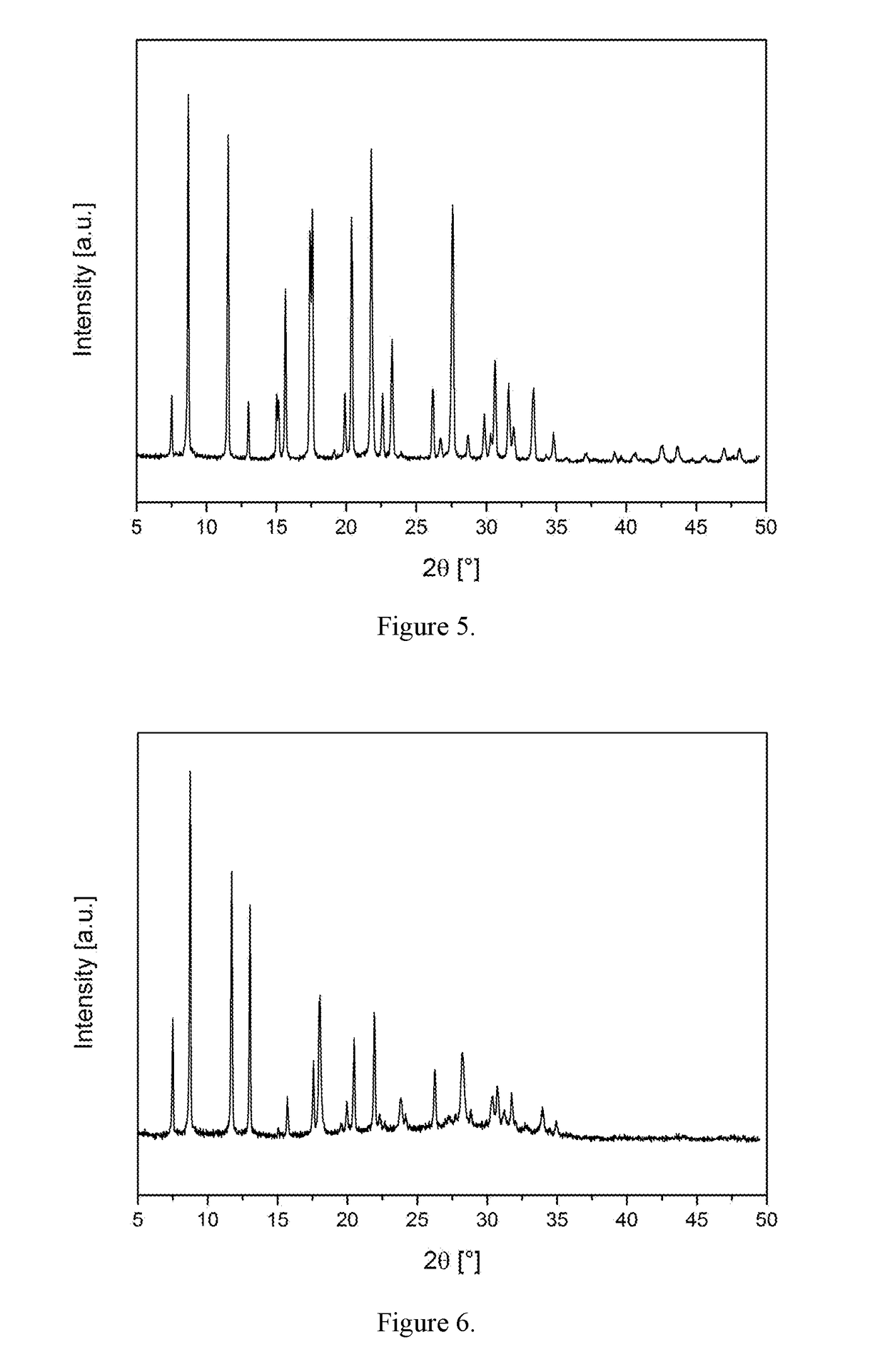Methods of producing sapo-56, an afx-containing molecular sieve
- Summary
- Abstract
- Description
- Claims
- Application Information
AI Technical Summary
Benefits of technology
Problems solved by technology
Method used
Image
Examples
example 1
of 1,5-(1,4-diazabicyclo[2.2.2]octane)pentyl dibromide (diDABCO-C5), a Structure-Directing Agent
[0098]13.0 g (0.06 mol) of 1,5-dibromopentane was dissolved in 50 mL ethanol and added drop-wise with stirring to a solution at 50° C. of 33.6 g (0.30 mol) of 1,4-diazabicyclo[2.2.2] octane (DABCO) dissolved in 100 mL ethanol. The mixture was refluxed for 24 hours, then cooled. Excess ethanol was removed on a rotary evaporator leaving yellow oil. Subsequently cold diethyl ether was added to the oil to precipitate a white solid that was washed with cold acetone and acetonitrile and dried at 50° C. overnight. The reaction yielded 20.27 g (yield 79%) of product which was analysed by NMR and elemental analysis.
example 2
of SAPO-56 Using Trimethylamine and diDABCO-C4
[0099]A reaction gel having a molar composition:
0.29 SiO2:1 Al(OH)3:0.71 H3PO4:40 H2O:0.10 diDABCO-C4:0.21 trimethylamine:0.23 tetrabutylammonium hydroxide
was prepared in a 30 mL pressure vessel. The reagents used and order of addition was:[0100]a) The required amount of phosphoric acid (H3PO4 85 wt. %, BDH) was weighted into a Teflon lined vessel.[0101]b) The required amount of silica (fumed silica powder 0.007 μm, Sigma Aldrich) and water were added to the phosphoric acid and the mixture was stirred.[0102]c) The required amount of aluminium hydroxide (Al(OH)3, Sigma Aldrich) was added to the above mixture.[0103]d) After stirring for 30 minutes, diDABCO-C4 (Valiant) was added to the mixture.[0104]e) Trimethylamine (45 wt. %, Sigma Aldrich) was added to the above mixture and the mixture was stirred for 10 minutes.[0105]f) Tetrabutylammonium hydroxide (40 wt. %, Sigma Aldrich) was then added to the mixture to maintain the pH at 7.
[0106]Th...
example 3
n of SAPO-56 of Example 2
[0108]A portion of the as-made material from Example 2 was activated by calcination in dry oxygen. The material was heated at 600° C. and held at that temperature for 12 hours. The PXRD pattern of the activated product and the list of diffraction peaks are shown in FIG. 2 and Table 4, respectively.
TABLE 4Diffraction peaks of calcined material of Example 3.d-spacing2θRel. Int.[Å][°][%]11.797.53310.108.81007.5511.7646.8013.0825.6515.7125.0617.5224.9418.0284.4619.9104.3520.4374.0621.9463.7423.8103.4026.2283.1628.2242.9530.3182.9130.7222.8231.7182.6433.992.5734.97
PUM
| Property | Measurement | Unit |
|---|---|---|
| weight percent | aaaaa | aaaaa |
| temperatures | aaaaa | aaaaa |
| temperatures | aaaaa | aaaaa |
Abstract
Description
Claims
Application Information
 Login to View More
Login to View More - R&D
- Intellectual Property
- Life Sciences
- Materials
- Tech Scout
- Unparalleled Data Quality
- Higher Quality Content
- 60% Fewer Hallucinations
Browse by: Latest US Patents, China's latest patents, Technical Efficacy Thesaurus, Application Domain, Technology Topic, Popular Technical Reports.
© 2025 PatSnap. All rights reserved.Legal|Privacy policy|Modern Slavery Act Transparency Statement|Sitemap|About US| Contact US: help@patsnap.com



